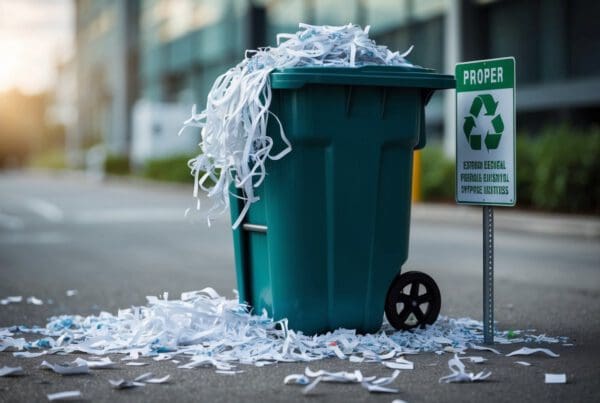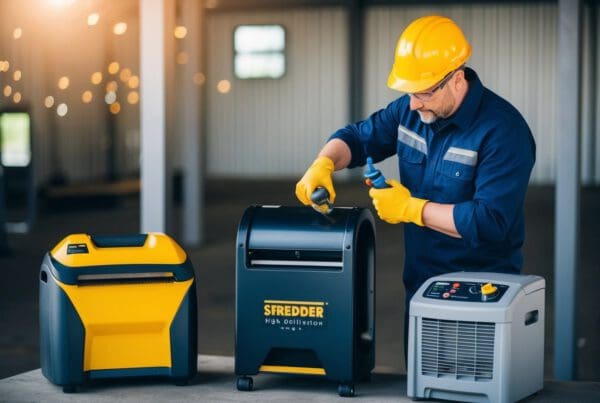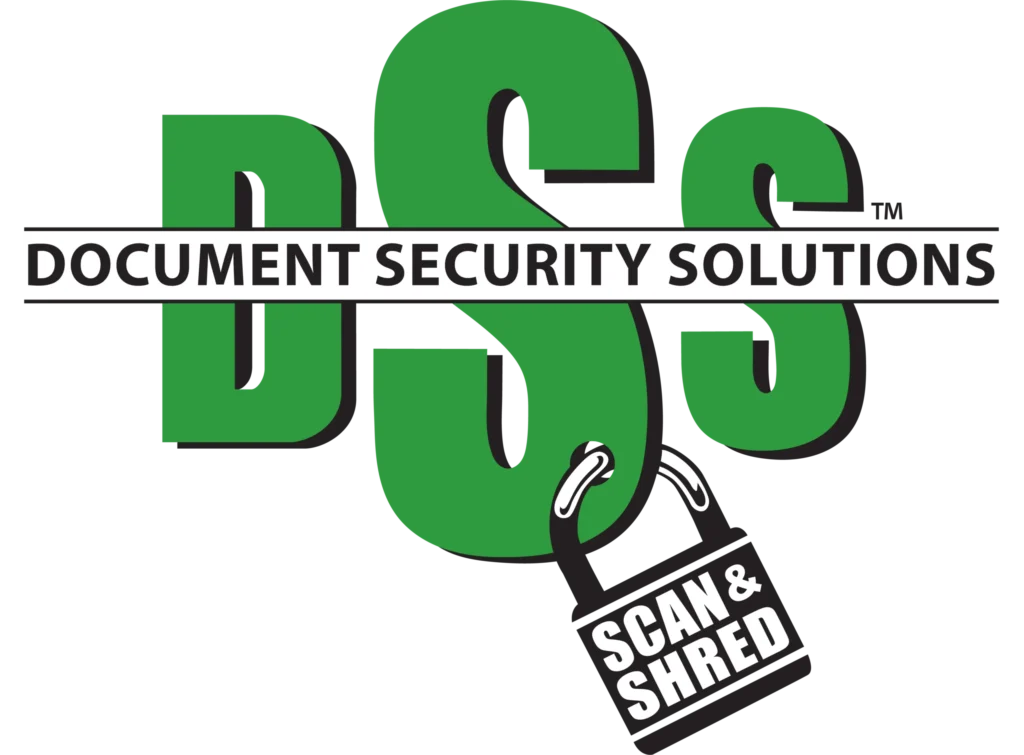Understanding Shredder Jams
Shredder jams are a common issue that can disrupt the document destruction process. By understanding the common causes of jams and how to prevent them, businesses and individuals can ensure secure and efficient shredding.
Common Causes of Shredder Jams
One of the main causes of shredder jams is overloading. Feeding too many sheets at once can clog the blades and cause the motor to overheat. Using the wrong type of material, such as cardboard, paperclips, or thick stacks of paper, can also lead to jams.
Another common issue is improper maintenance. Shredders accumulate dust and paper particles, which can affect performance. Regular cleaning and lubrication of blades can significantly reduce the risk of jams.
Low-quality paper can also contribute to jams. Thin or brittle paper may break apart, while thick paper may exceed the machine’s capacity. Using high-quality paper for shredding can help prevent such issues.
Types of Shredders Prone to Jams
Some shredders are more prone to jams based on their design and usage.
- Strip-cut shredders: These are basic models that cut paper into long strips. They are more prone to jams due to their limited cutting ability.
- Cross-cut shredders: These cut paper into small pieces, reducing the risk of jams but requiring more frequent maintenance.
- Micro-cut shredders: These offer high-security shredding but require regular blade lubrication to prevent clogging.
High-capacity commercial shredders handle larger volumes but must be maintained properly to avoid frequent breakdowns. Businesses using shredders for bulk document destruction should follow a strict maintenance routine.
Proper Paper Handling for Shredding
Proper handling of paper before shredding is essential to maintain smooth operation and prevent damage to the machine.
Selecting the Right Paper for Shredding
Using standard office paper is ideal for most shredders. Avoid glossy or coated paper, as they can cause buildup on the blades. Remove staples, paperclips, and rubber bands to prevent unnecessary wear and tear on the machine.
Storing Paper Correctly
Proper paper storage helps maintain its quality for shredding. Keep paper in a cool, dry place to prevent moisture absorption. Humidity can cause paper to clump together, increasing the chances of jams.
Feeding Paper Properly
To avoid jams, feed paper in small, manageable stacks according to the shredder’s capacity. Ensure that sheets are properly aligned and fed straight into the machine. If the shredder starts slowing down, pause to let it clear before continuing.
Optimizing Shredder Settings
Optimizing settings can help extend the life of the shredder and ensure smooth operation.
Adjusting Paper Entry Guides
Many shredders come with adjustable guides to align paper properly. Ensuring these guides are set to the correct width prevents misfeeds and jams.
Using the Right Speed and Capacity Settings
Some high-end shredders offer variable speed settings. Using the appropriate setting for different materials ensures efficient shredding without overloading the motor.
Maintenance Strategies for Prevention
Preventive maintenance is key to ensuring a shredder operates efficiently and lasts longer.
Regular Cleaning Routines
Dust and paper buildup can hinder a shredder’s performance. Regularly emptying the waste bin and using a soft brush or compressed air to clean the blades helps prevent clogs.
Shredder oil should be applied periodically to keep the blades sharp and running smoothly. For heavy-duty shredders, a lubrication sheet can be run through the machine to maintain optimal function.
Managing Humidity Levels
Excess humidity can cause paper to stick together, increasing the likelihood of jams. Keeping shredders in a climate-controlled room with humidity levels between 40-60% ensures consistent performance.
| Environment | Humidity (%) |
|---|---|
| Office Space | 40-60 |
| Storage Room | 30-50 |
Scheduled Shredder Maintenance
Routine maintenance should include checking for worn-out blades, ensuring proper lubrication, and inspecting the motor for overheating. For high-usage shredders, professional servicing can help maintain efficiency and prevent costly breakdowns.
Effective Troubleshooting Techniques
When a shredder jam occurs, it is essential to address it properly to avoid damage.
Clearing Jammed Paper
- Turn off and unplug the shredder for safety.
- Open the shredder head and carefully remove any visible paper using tweezers or a tool.
- Reverse the shredder function to help push out stuck paper.
- Lubricate the blades and run a test sheet to ensure smooth operation.
Avoid using excessive force, as this may damage the blades or motor.
Dealing with Foreign Objects
Foreign objects like staples, clips, and plastic materials can cause serious damage to shredders. If the machine stops working, check for any obstructions and remove them carefully. Using a flashlight can help locate small objects stuck inside the blades.
Partnering with Document Security Solutions (DSS)
For businesses requiring high-security document destruction, Document Security Solutions (DSS) offers professional shredding services. DSS provides:
- On-site and off-site paper shredding for secure document disposal.
- Hard drive destruction services to protect sensitive digital data.
- HIPAA-compliant solutions to meet regulatory standards.
By utilizing DSS’s services, businesses can ensure secure and compliant document disposal while avoiding the hassle of maintaining shredding equipment.
For more information on professional shredding services, visit Document Security Solutions.





